8% off orders over $100, 15% off orders over $150, 20% off orders over $300.
Menu
-
- Specials
-
Types
-
Symbols
- Auspicious Cloud | Heaven
- Lotus | Purity & Elevation
- Phoenix | Rebirth and Fidelity
- The Nine | Eternity and Completeness
- Bamboo | Strength and Resilience
- Ruyi | Wish Fulfillment
- Moon | Mystery & Elegance
- Herbal Locket | Hidden Protection
- Tassel | Elegant Charm
- Butterfly and Flower | Love
- Plum Blossom | Endurance and Resilience
- Chinese Knot | Harmony, Tradition, Legacy
- Pumpkin | Prosperity & Abundance
- Pipa | Celestial Music
- Hulu Gourd | Protection and Prosperity
- Fish | Prosperity
-
Collections
- Atlantis
- Revive Your Inner Kingdom
- Auspicious Origin
- Auspicious Flower
- Udumbara Flower
- Return to Origin
- Celestial Cloud
- Elf Forest
- Gold Lotus
- Serene Lotus
- Pearl Elegance
- Radiance
- Metropolis Hermit
- The Nine
- Moon Goddess
- Tassel Elegance
- Chic Velvet Choker
- The Cloud
- Lotus Leaf
- Realm of Peace
- Four Season
-
Craftsmanship
-
Gemstones
- Pearl | Purity and Wisdom
- Jade | Stone of Heaven
- Turquoise | Protection and Healing
- Tridacna | Realm of Peace
- Lapis | Truth and Enlightenment
- Rose Quartz|Love, Healing, Compassion
- Amethyst | Clarity and Tranquility
- Amber | Vitality and Protection
- Carnelian | Courage and Vitality
- Coral | Protection and Prosperity
- Tourmaline | Energy and Balance
- Crystal | Healing and Clarity
-
Birthstone
-
Style
-
Price
-
- Jewelry Set
- Necklaces
- Earrings
- Bracelets
- Hair Jewelry
- Glasses Chains
- Rings
- Anklets
- Ornaments
- Login
-
English

8% off orders over $100, 15% off orders over $150, 20% off orders over $300.
Chinese Jade (Part 2) : Material and Technique
March 22, 2016 3 min read 1 Comment

The Chinese have a habit of calling any treasured stone “jade.” They mean it figuratively, of course, but true jade comes in only two forms: nephrite and jadeite. But up until 1863, no one knew that jade was not one, but two species. Both types are stronger than steel due to its interlocking, fibrous structure, making jade the toughest of all natural stones. Diamond might be harder, but it shatters. Jade does not.
For over 2,000 years, Chinese used nephrite from Central Asia and Siberia. Its colors run from deep green to milky white or mottled tan. Jadeite, however, comes in many colors—golden yellow, lavender, grass green, pink, orange, blue. When jadeite first came to China from Burma 200 years ago, it was nicknamed the “kingfisher stone” as an insult for its rainbow personality. It is still called that today, even though Chinese came to like it by the Qing Dynasty.
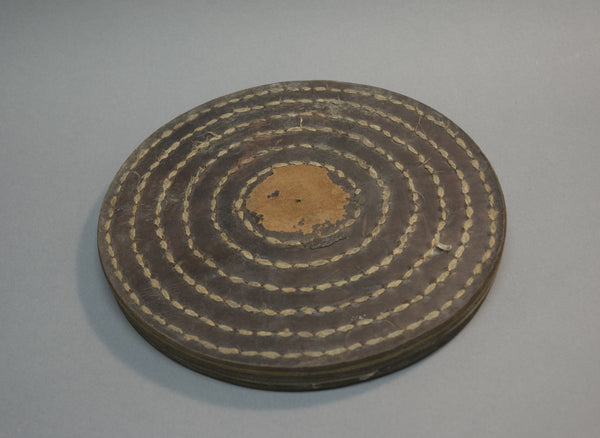 Ancient Jade Masters
Ancient Jade Masters
From obtaining the rough material to polishing the finished piece, jade working in ancient China took labor, discernment, and almost impossible patience.
First, the jade is harvested from mountains and rivers as boulders. Then, it is judged—not only for color and quality, but also for its personality and energetic principle. The jade smith even smells and tastes the jade. If the rough’s aura is deemed “ethereal,” it is considered heavenly in principle, or yang; if it is deemed dark and heavy, it is considered earthly in principle, or yin. This determines what kind of work would be appropriate to make from the material. This keeps jade work from becoming a commodity because every stone demands to be transformed into a different piece of art.
Then comes jade cultivating. Why it is called jade cultivating instead of jade carving? Because as the famous saying goes, “stubborn stone lacks character; only the master’s hand can cultivate it into an art piece.” The jade smith’s job, to paraphrase the (alleged) words of Michelangelo, is to see the angel in the stone and carve it free.
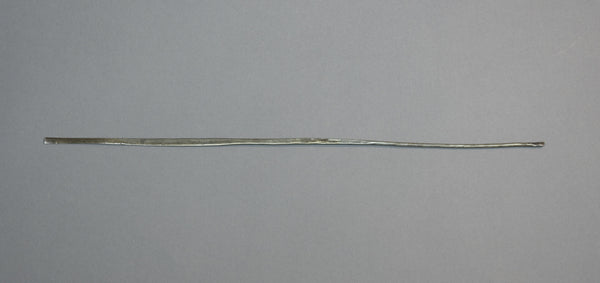
Working with jade is a tough job because jade is a tough stone. Metal can’t cut into it, so it must be slowly, painstakingly abraded using sand of quartzite, garnet, and corundum. Some larger, most intricate masterpieces take 10 years for a team of carvers to complete.
However, there exist rumors of a tool called the Kunwu blade that cuts jade like a regular knife cuts mud. Modern speculators believe that it might have been tipped with diamond, though it's fun to imagine that its secret ingredient was magic.
In the Ming dynasty there lived a jade master named Lu Zigang. For 200 years after him, no one matched his level of mastery. He could carve jade into threads as thin as hairs, and was in the habit of signing his pieces in a script so tiny it was undetectable to the naked eye. Eventually he went to work for the emperor, who forbade any artist from making a name creating imperial wares.
Despite this, Zigang managed to put his signature in the mouth of a dragon he produced for the court. Officials alerted the emperor, who turned livid. As a final test, he ordered Zigang to carve a ring with hundreds of horses on it—and if he failed, he’d be put to death for his transgression. Zigang executed the design in such a way that three horses appeared to be dozens more. The emperor was as impressed as he was annoyed, and so let him be.
Jade Working Today
To get a taste for modern jade working, I visited Maykel Rieth of R Gems, a lapidary in Manhattan. Today, the tools are drastically different from those of ancient times. With motorized rotary polishers, flex shafts, and ultrasonic drills, the whole process, while essentially the same (minus Taoist divinations), goes a lot faster.
This article is part of the Divine Land Gemstone Compendium, a weekly series by Yun Boutique exploring the gemstones of ancient China and their significance to Chinese culture. See the full series here. Subscribe to the email newsletter to receive future installments.
Produced and edited by Christine Lin. Researched by Ariel Tian.
1 Response
Leave a comment
Subscribe
Sign up to get the latest on sales, new releases and more …


 Ancient Jade Masters
Ancient Jade Masters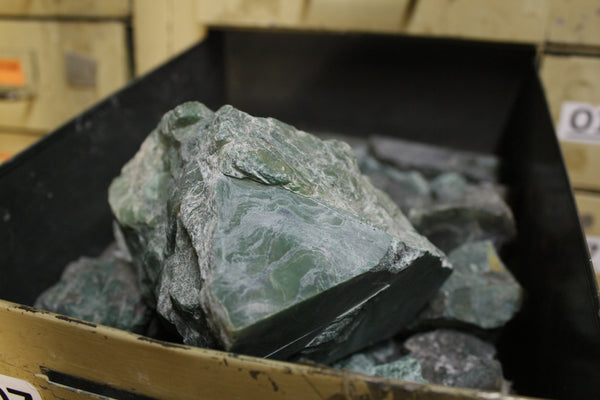
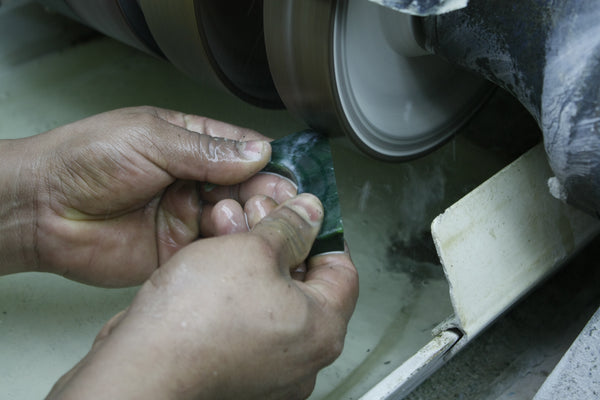
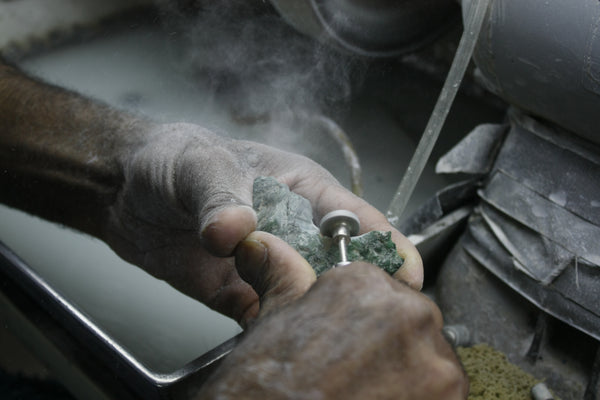
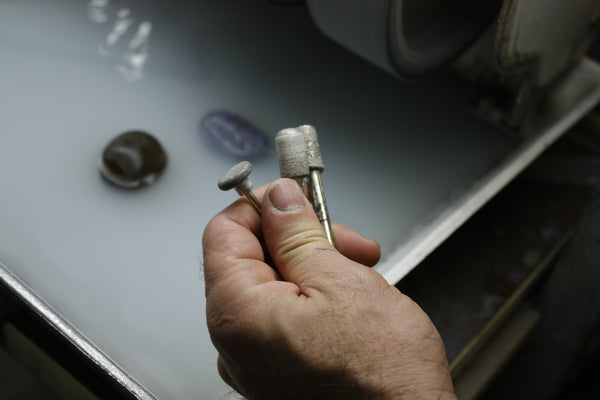
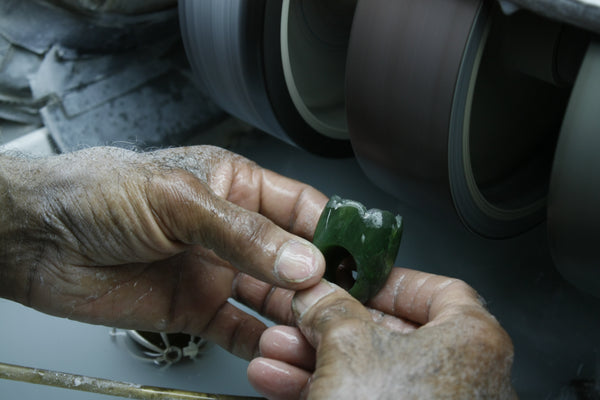
James Poulter
May 22, 2016
Such a great article! Many profound matters are addressed with such a light touch. Fascinating to hear more about jade, in ancient and modern times. I am really enjoying this series :)